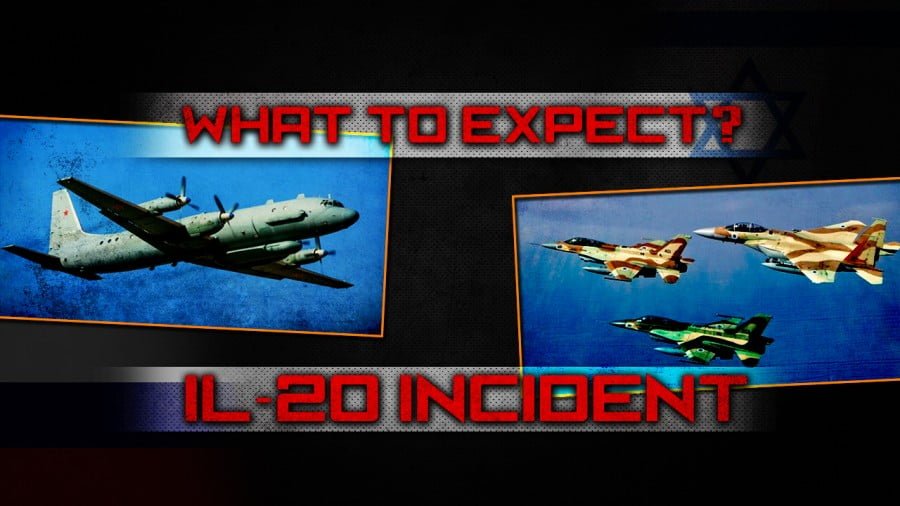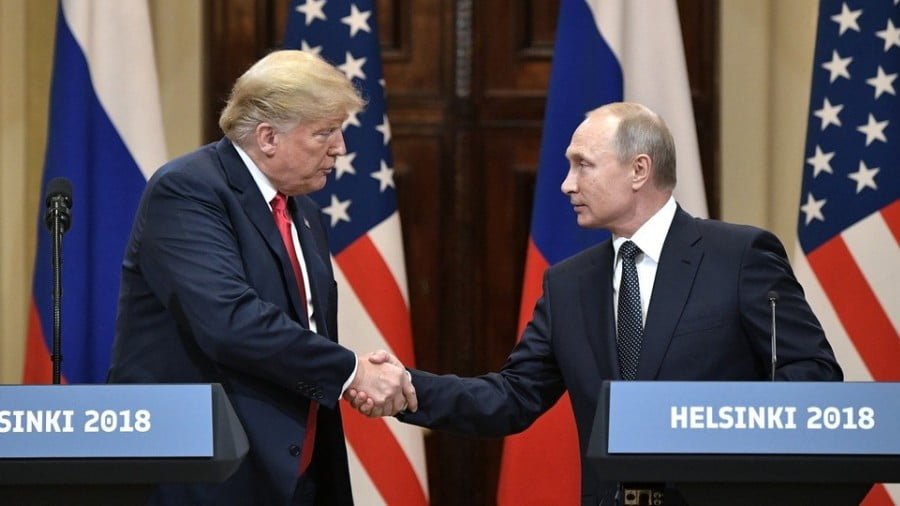Russian IL-20 Shootdown and S-300 Supplies to Syria. What to Expect?
On September 24, Russian Defense Minister Sergei Shoigu announced that the Syrian military will receive the S-300 air defense system within two weeks, adding that the system has a range of 250km and is capable of intercepting several air targets simultaneously.
The defense minister added that all HQs of the Syrian Air Defense Forces (SADF) will be equipped with better automated process-control systems, “which are only supplied to the Russian Armed Forces.” This will allow a centralized control of SADF units across the country to be established, will lead to a better integration of Syrian and Russian military assets operating in Syria as well as provide the SADF with better targeting information. According to Shoigu’s statement, Russian EW systems will suppress any communications, radars and satellite navigation of combat aviation involved in attacks on Syria from the eastern Mediterranean.
Shoigu recalled that Russia had frozen S-300 supplies to Syria in 2013 at Israel’s request, adding that now the situation had changed.
Many observers and experts are looking forward to the time when these systems will indeed be placed on high alert in Syria and will then demonstrate their ability or inability to confront modern combat aviation.
In any case, the supply of S-300 system will further affect the already shifting balance of power in the Middle East, particularly in Syria, where the Assad government and its allies – Russia, Iran and Hezbollah – de-facto achieved victory in the hot phase of the conflict.
Cooperation with Turkey allowed the Syrian-Iranian-Russian alliance to reach a number of important military, humanitarian and security goals, de-escalating the situation in the northwestern part of the country and setting a foothold for possible peaceful dialogue between Damascus and the Turkish-backed opposition. Relations between Ankara and the Moscow-led alliance have never been too warm, but have been cooperative on the ground. This cooperation faces opposition from Washington, which has even threatened Ankara with sanctions.
Meanwhile, the US-Israeli bloc have not been able to achieve their goals in the war torn region. These goals were to replace the Assad government with a loyal regime and to limit the influence of its adversaries – Hezbollah and Iran. In fact, the conflict has led to a significant growth of Iranian influence and of the activity of Hezbollah.
The US decision to recognize Jerusalem as the capital of the Israeli state and the attempts of the Trump administration to intervene in any case where Israeli interests are allegedly under-respected have already led to a further escalation regarding the Palestinain and Israeli transborder issues. Moreover, the US withdrawal from the Iran Nuclear Deal forced Teheran to take a toughter stance on regional issues, including its ballistic and military programs and investments in the conflicts in Syria, Iraq and Yemen.
The situation in and near the Gaza Strip is especially tense. Clashes between Palestinain protesters and Israeli forces have resulted in hundreds of killed and thousands of injured Gazians. The number of Israeli strikes on various Palestinian targets has grown while Palestinian armed groups have also expanded mortar and rocket shelling of southern Israel.
On July 19, Israel also adopted a basic law declaring itself the nation-state of the Jewish people. The law set Hebrew as the official state language, removing Arabic and declared Jerusalem the Israeli capital. The law further established “developing Jewish settlement as a national interest and will take steps to encourage, advance, and implement this interest.” This move became another factor fueling Arab-Israeli tensions in the region.
In view of the above, Russia has for a long time been working to remain ready to cooperate with all sides in order to defeat terrorism and to put an end to the Syrian conflict. The Russian military established de-confliction lines with the US-led coalition and the Israeli Defense Forces (IDF). Efforts from the Russian side allowed the situation near the Golan Heights to be de-escalated and prevented further confrontation between Israeli forces and Iranian-backed units in southern Syria. Furthermore, Moscow has avoided engaging in the smoldering Syrian-Israeli conflict and has contributed no direct steps to repel any of the Israeli strikes on Syria.
However, as Shoigu stated, the situation has hanged. The Russian decision to supply S-300 systems to the Syrian military was a result of a series of events which started with the incident involving the Russian IL-20 reconnaissance plane off the Syrian coast on September 17. The plane with 15 servicemen on board was shot down by a Syrian S-200 air defense system repelling an aerial attack by the Israeli Air Force.
There are two conflicting versions of this development:
Russian version
According to the data provided by the Russian Defense Ministry on September 18, four Israeli F-16 jets carried out strikes on two facilities of the Damascus government in Lattakia. During the attack, the Israeli jets used the IL-20 as a cover thus triggering the incident.
On the same day, Defense Minister Shoigu stated that Israel is the side bearing full responsibility for the IL-20 shootdown and added that Moscow reserves “the right to respond”. Russian President Vladimir Putin described the incident as a string of tragic circumstances.
On September 19, Russian forces kicked off live fire drills off the coast of Israel and Syria, which lasted until September 26. The no-fly zone established in the framework of the drills covered most of airspace near Israeli waters.
On September 23, the Russian Defense Ministry held another press briefing providing a detailed look at the IL-20 incident. During the briefing, Defense ministry spokesman Major General Igor Konashenkov once again confirmed that Moscow sees Israel as the side responsible for the tragedy. The reasons are the actions of the Israeli side:
- F-16 jets were using the IL-20 as cover to hide from Syrian air defense fire;
- The Israeli military warned Russian forces about the strike less than one minute ahead of it and provided misinformation about the targets claiming its jets would attack several “industrial facilities” in northern Syria;
- Israel has shown its low commitment to the deconfliction agreement with Russia. According to Konashenkov, Russia has sent as many as 310 notifications to the Israeli military. In turn, Israel has notified the Russian side only 25 times although its jets carried out more than 200 strikes on targets located in Syria over the past 18 months alone.
Konashenkov emphasized that “the hostile actions committed by the Israeli Air Force against the Russian Ilyushin IL-20 aircraft cross the line of civilized relations.”
On September 24, the Russian Defense Ministry held another briefing revealing radar data confirming its statements.
Israeli version
The version of the events provided by the IDF is quite different. On September 18, the IDF released an official statement claiming that Syria, Iran and Hezbollah were responsible for the tragedy.
The IDF contested the version provided by Russia saying that Israeli warplanes were “within Israeli airspace” when the Syrian forces launched anti-aircraft missiles.
“The Syrian anti-air batteries fired indiscriminately and from what we understand, did not bother to ensure that no Russian planes were in the air,” the IDF stated.
Describing the target of the strike the IDF claimed that it was “a facility of the Syrian Armed Forces from which systems to manufacture accurate and lethal weapons were about to be transferred on behalf of Iran to Hezbollah in Lebanon.”
On September 20, the Israeli delegation, led by Air Force Chief Maj. Gen. Amikam Norkin, visited Moscow in order to provide Russian officials with Israel’s initial investigation of the incident. They claimed that the Syrian military fired more than 20 anti-aircraft missiles in response to the Israeli attack, with most of the missiles being fired after the Israeli jets had left the area. The delegation once again insisted that Syria is the side to blame for the situation.
Following the September 23 press briefing by the Russian Defense Ministry, Israeli Defense Minister Avigdor Liberman stated that Israel’s Syria policy will remain unchanged, and will include further strikes, despite the IL-20 incident.
“We act with discretion and responsibility,” Liberman told Israel Radio in an interview. “Nothing has changed and nothing will change. This is our policy.” He further stated that Israel does not “intend to have a public argument with Russia via the media”.
“We have made it clear that we will not allow Syrian territory to become a front for Iran against the State of Israel,” Liberman said. “We will continue to act to prevent this and we have all the means and all the possibilities.”
On the same day, the IDF once again rejected the Russian version of the IL-20 incident as false claiming that all the data to prove the Israeli version had been provided to Moscow.
Reactions and analysis
Summing up statements and reactions of the sides, the only point on which the Russian and Israeli versions of the incident agree is that the IL-20 was shot down by Syrian air defense fire off the Syrian coast.
Tel Aviv took a harsh stance publicly denouncing Russian statements and rejecting the authenticity of the radar data provided by the Russian military. Furthermore, the Israeli defense minister found time to claim that there will be no changes in the Israeli behavior.
The long history of Russian involvement in the Syrian conflict shows that Israeli leadership could not have been interested in scenarious like the IL-20 incident because a productive relationship with Russia is the only real tool to avoid the further deployment of Iranian and Iranian-backed forces in southern Syria and a possible open confrontation there.
The Israeli establishment had nothing to gain from the IL-20 shootdown militarily or diplomatically. Additionally, this incident can hardly be used in Israeli domestic policy to mobilize the population because Israel itself is in a constant state of emergency.
It appears that some Israeli mid and top level officers and military officials were beside themselves with glee at their “successful exploitation” of the allegedly weak Russian stance, which allows Tel Aviv to maintain a relative freedom of actions in Syria. Thus, the decision was made to interact with the Russians in a hostile manner, which led to the IL-20 incident.
An official decision to supply S-300 air defense systems to Syria as well as the tough response of the Russian Defense Ministry to the IDF’s attempts to deny its responsibility for the tragedy shows that by September 24, the Russian leadership had finalized a common platform on this incident, which had also been approved by Putin.
Russia decided to take a series of direct public steps, which are designed to ensure the safety of its troops in Syria and to boost Syrian air defense capabilities thus further limiting the influence of the Israeli-US bloc in the conflict.
While it is unlikely that the Russian military will be publicly involved in the repelling of Israeli strikes on Syria, it will take some steps under the Syrian flag. These steps may include:
- providing the SADF with additional intelligence as well as means and measures to repel Israeli aggression;
- further supplies of modern air defense systems to Syria;
- coordination of the SADF efforts to repel Israeli strikes through their military advisers embedded with the crews of the Russia-supplied air defense systems.
Considering the current level of media hysteria in Israel and the US and the complicated situation in the region caused by the ongoing standoff between the Israeli-US bloc and Iran, the rash and hostile actions of Israel in Syria once again put the Middle East on the verge of a hot regional war.







